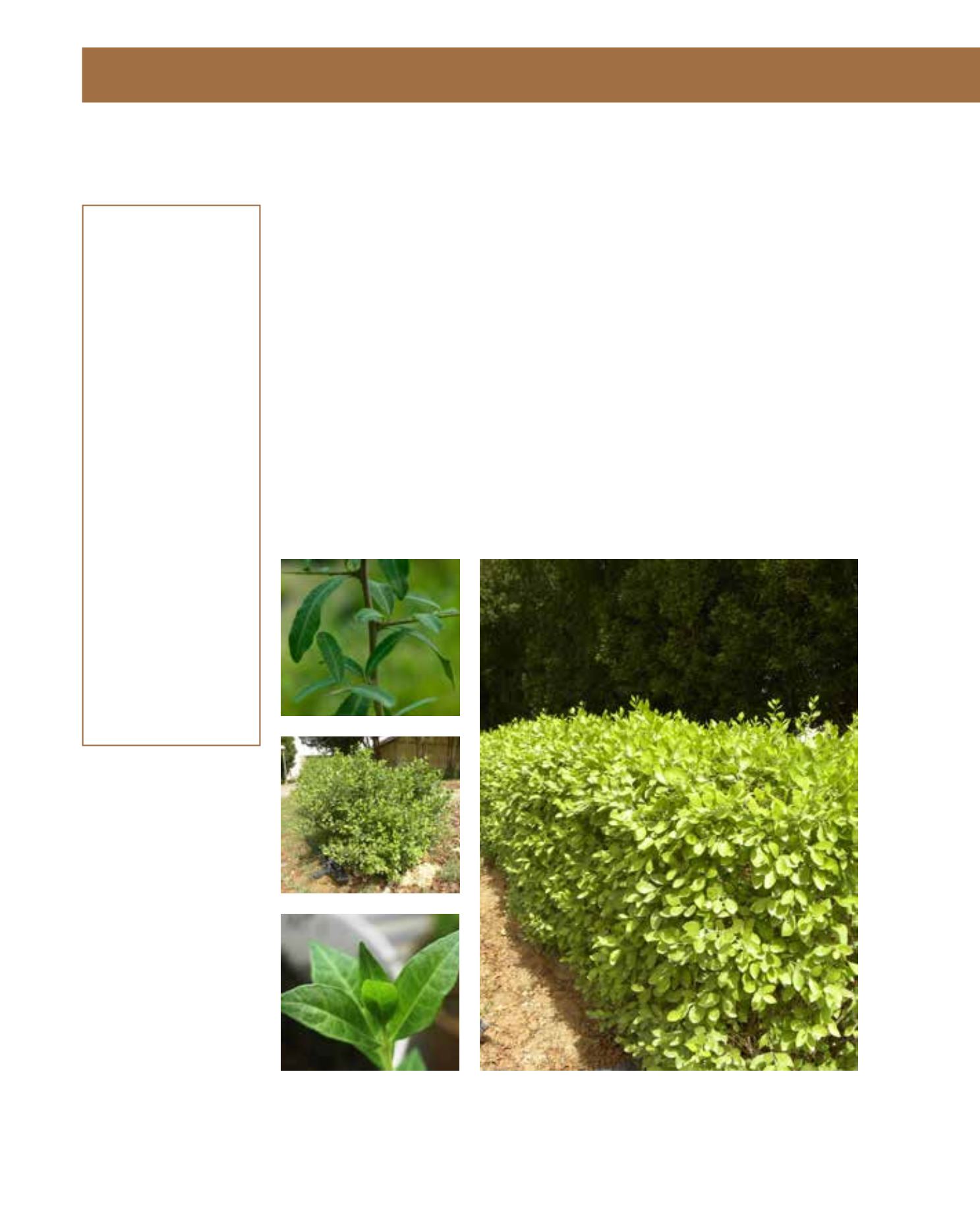

GENERAL
Origin
:
sub-tropical
Vigour
:
fairly fast
growing
Humidity
:
very arid, semi-
arid, semi-humid,
very humid
Propagation :
sowing and
pricking out,
cuttings
Maintenance :
moderate
CONDITIONS
Urban climate :
resistant
Dessication :
resistant
Stagnant water :
vulnerable
Irrigation
:
medium
Salinity/ppm :
low (1000 ppm)
Hardiness
:
-3°C
SHAPE
Type
:
shrub
Height
:
4 m-6 m
Spread
:
3 m-4 m
Foliage
:
deciduous
FLOWER
Colour
:
pale pink
Size
:
5 cm - 15 cm
Period
:
July - September
Smell
:
scented, flower
FRUIT
Type of fruit :
capsule
Fruit size
:
0.8 cm
Egyptian Privet or Henna grows wild in the Hejaz where it has become naturalised on alluvial
soils along watercourses. It is grown throughout the Kingdom as an ornamental shrub. Fast-
growing, it reaches the proportions of a small tree. Henna is a somewhat straggly, many bran-
ched, glabrous shrub up to 6 metres high with a greyish-brown bark. The size of the small, pale
grey-green, elliptical leaves is dependent on the availability of water. L. inermis bears numerous,
very fragrant, usually whitish, sometimes reddish flowers, in large, pyramidal, terminal panicles,
in summer. The globose fruit capsules, are purplish-green and many-seeded. Propagation is by
cuttings or seed, and the thick seed coat must be pre-germinated before sowing. Henna requires
full sun and high temperatures, and will survive light frosts. Very drought-resistant, it needs
moderate water in summer and deep watering to improve its appearance during hot weather. It
prefers stony and sandy soils, with good drainage, but adapts to heavy, fertile clay soils. It is not
salt-tolerant. Henna is susceptible to only a very few pests and diseases. L. inermis is of great
importance to Muslims, where it is used in marriage ceremonies: the leaves are ground into a
paste that can be used to decorate the palms of the hands and the soles of the feet or to dye the
hair. Tucked into a garden, it will provide an exclusive fragrance. It is also useful as a hedge plant,
although clipping will remove the scented flowers. Careful pruning is necessary to keep the plant
compact.
189
Lawsonia inermis,
Lythraceae
Henna,
Egyptian Privet, Mignonette Tree
















